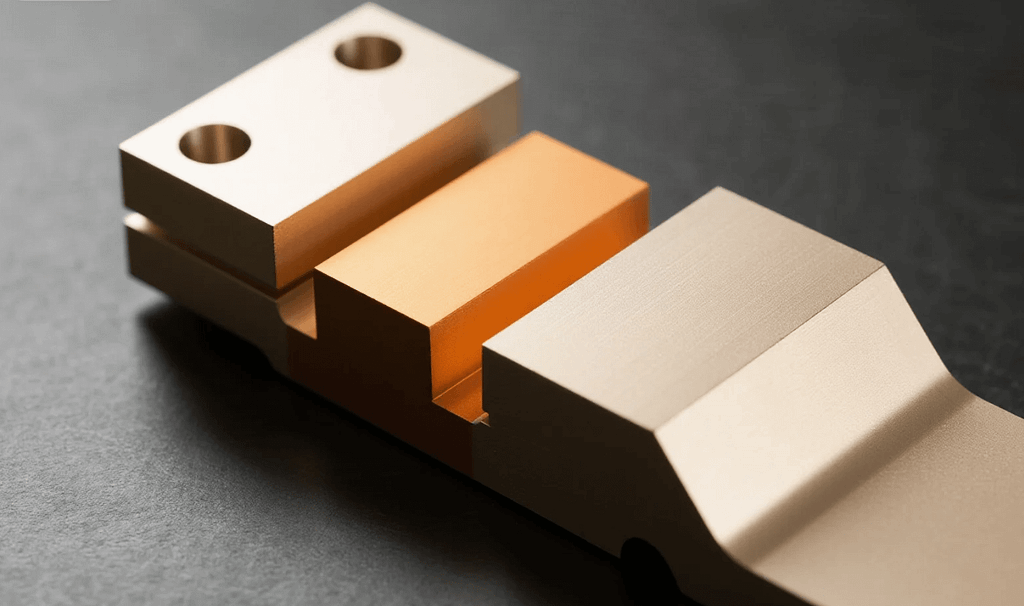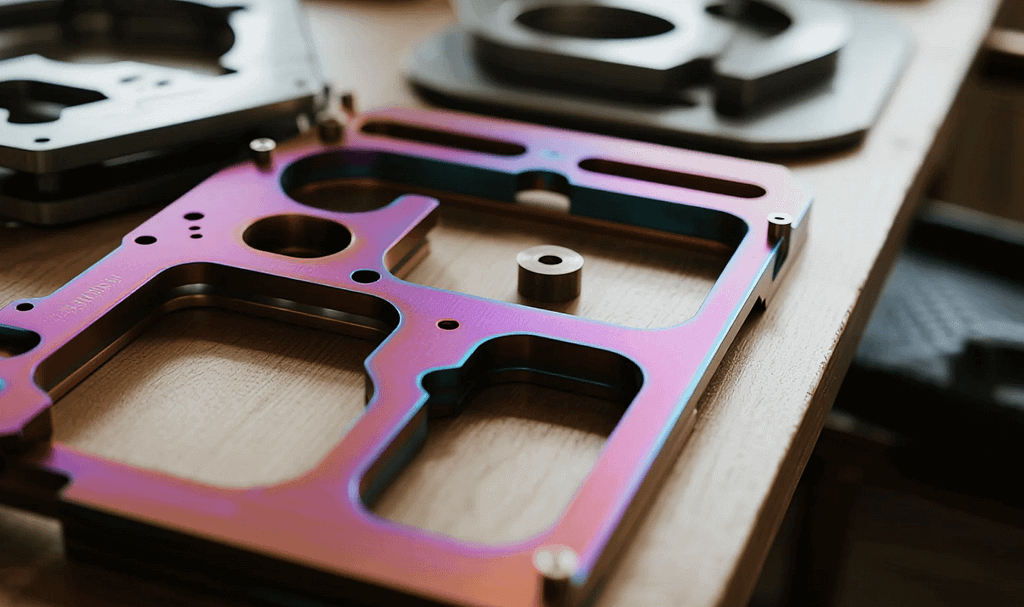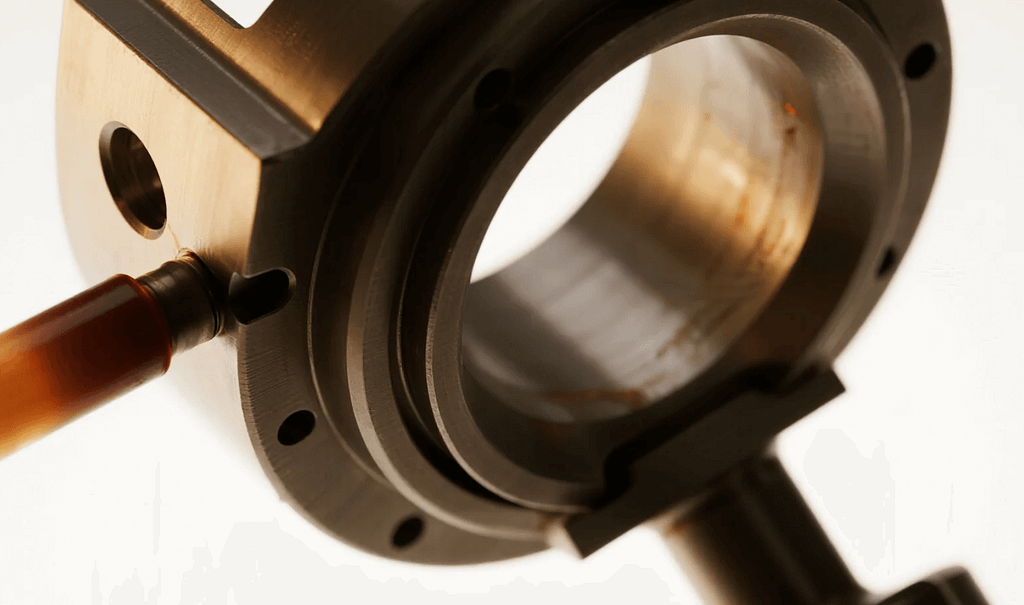In the world of high-performance components, where every millimeter and every micro-inch matters, the surface finish is just as important as the underlying material. For aluminum and its alloys, one surface treatment stands out as a true game-changer: الطلاء بأكسيد الألومنيوم. More than just a simple coating, الطلاء بأكسيد الألومنيوم is a sophisticated electrochemical process that fundamentally transforms the surface of a metal part. But what exactly is الطلاء بأكسيد الألومنيوم, and why is it so essential for achieving the exacting standards required in today’s most demanding industries, from aerospace to medical devices?
This comprehensive guide will demystify the الطلاء بأكسيد الألومنيوم process, delve into its unique benefits, and explain why it has become an indispensable step in the production of precision-machined parts. We will explore how this process creates a protective, integral layer that enhances durability, corrosion resistance, and aesthetic appeal, all while maintaining the tight tolerances critical for functional components.
Understanding the Anodizing Process: A Deeper Dive

At its core, الطلاء بأكسيد الألومنيوم is a controlled process of oxidation. It works by immersing a metal part—typically aluminum—into an electrolytic acid bath. An electric current is then passed through the bath, with the aluminum part acting as the anode (hence the name “anodizing”) and a separate electrode serving as the cathode. This current triggers an electrochemical reaction, causing oxygen ions from the electrolyte to bond with the aluminum atoms on the part’s surface.
This reaction is not a simple deposition of a layer on top of the metal. Instead, the newly formed aluminum oxide layer grows both outward from and inward into the original material. This unique growth mechanism means the anodized layer is not a fragile coating that can flake or peel off; it is a hard, durable layer that is an integral part of the metal itself. The thickness and characteristics of this layer are meticulously controlled by varying the current, voltage, and electrolyte concentration, allowing for different types of finishes tailored to specific applications.
The Unrivaled Benefits of Anodizing for Precision Components

For engineers and designers working in precision manufacturing, the decision to use الطلاء بأكسيد الألومنيوم is driven by its exceptional functional and aesthetic advantages. These benefits go far beyond what traditional paints or platings can offer, providing a level of performance that is critical for mission-critical parts.
Enhanced Durability and Wear Resistance
The most significant advantage of الطلاء بأكسيد الألومنيوم is the dramatic increase in surface hardness. The aluminum oxide layer created during the process is significantly harder than the base aluminum alloy. This improved hardness makes the surface highly resistant to scratches, abrasions, and general wear and tear. For parts with moving components or those subject to frequent handling, such as those used in robotics or automation equipment, this durability translates directly into a longer service life and reduced maintenance. The hardcoat الطلاء بأكسيد الألومنيوم process (often referred to as Type III) is particularly effective for this purpose, creating a thicker, denser layer that can rival the hardness of tool steel.
Superior Corrosion and Chemical Resistance
Aluminum, while lightweight, is naturally prone to oxidation and corrosion when exposed to certain environments. The porous, inert aluminum oxide layer produced by الطلاء بأكسيد الألومنيوم acts as a powerful barrier, shielding the underlying metal from corrosive elements like moisture, salt, and various chemicals. This makes الطلاء بأكسيد الألومنيوم a crucial surface treatment for components used in marine, aerospace, and outdoor applications where environmental exposure is a constant threat. The sealing process, which follows the الطلاء بأكسيد الألومنيوم bath, closes the microscopic pores in the oxide layer, further enhancing its protective capabilities.
Precision and Dimensional Stability
Unlike many other surface finishes that add a measurable layer to the outside of a part, the growth mechanism of the anodized layer—growing inward as well as outward—minimizes dimensional change. This is a critical consideration for precision parts with tight tolerances. For example, in the production of electronic enclosures, medical instruments, or optical mounts, maintaining precise dimensions is non-negotiable. With careful control, the الطلاء بأكسيد الألومنيوم process can be executed with minimal impact on critical dimensions, ensuring that threads, bores, and mating surfaces remain within specification.
Aesthetic Versatility and Product Identification
While its functional benefits are paramount, the aesthetic qualities of الطلاء بأكسيد الألومنيوم are also highly valued. The naturally porous structure of the anodic layer allows for the application of vibrant dyes before the final sealing step. This enables a wide spectrum of colors, from deep blacks and blues to subtle golds and clear finishes. This capability is not merely decorative; it is essential for product branding, part identification, and creating a cohesive design language across a product line. In the medical and aerospace sectors, color-coding is often used for rapid identification of different components or instrument sizes, and الطلاء بأكسيد الألومنيوم provides a permanent, fade-resistant solution.
The Anodizing Process in Specific Precision Industries

The versatility of الطلاء بأكسيد الألومنيوم makes it an ideal solution for a diverse range of high-tech industries, each with its own unique set of requirements.
Aerospace and Defense
In aerospace, every component must be reliable and lightweight. Aluminum is a popular choice for these reasons, but it must be protected from the extreme environmental conditions of flight. الطلاء بأكسيد الألومنيوم, particularly Type III hardcoat, is widely used on structural components, brackets, and engine parts to provide superior resistance to wear and corrosion. Chromic acid الطلاء بأكسيد الألومنيوم (Type I) is also used for fatigue-critical parts due to its thinner, less-intrusive film that maintains the material’s structural integrity.
Medical Devices and Instruments
The medical industry demands materials that are biocompatible, easy to sterilize, and resistant to corrosive bodily fluids and harsh cleaning agents. Aluminum parts used in surgical instruments, diagnostic equipment, and medical housings are frequently anodized. The process not only provides a durable, sterile surface but also allows for color-coding, which is crucial for quick and accurate identification of instruments in a sterile field.
Electronics and Consumer Products
From smartphone chassis to laptop bodies, the sleek, durable finish on many consumer electronics is a result of الطلاء بأكسيد الألومنيوم. The process provides a premium feel, scratch resistance, and the ability to achieve a consistent color across thousands of units. Furthermore, the non-conductive nature of the oxide layer makes it suitable for insulating electronic components, preventing short circuits and improving overall device safety.
Final Thoughts on a Critical Surface Treatment
In summary, الطلاء بأكسيد الألومنيوم is much more than just a finishing step; it is a fundamental process in the creation of high-quality, high-performance components. By transforming the surface of aluminum and its alloys into a robust, protective layer, it addresses the most critical challenges faced by precision manufacturers—from durability and corrosion resistance to aesthetic appeal and product identification. For those who demand the highest standards of quality and performance, a deeper understanding of الطلاء بأكسيد الألومنيوم is the key to unlocking the full potential of their designs.
FAQs
Q: Can all types of aluminum be anodized? A: Most aluminum alloys can be anodized, but the final appearance and performance can vary. Alloys with higher purity (e.g., 6061, 7075) typically produce a clearer, more consistent finish, while those with higher levels of silicon or other impurities (e.g., 380) may result in a darker, duller gray.
Q: Does anodizing add significant thickness to a part? A: الطلاء بأكسيد الألومنيوم does add thickness, but it is highly controlled. For Type II decorative الطلاء بأكسيد الألومنيوم, the film is typically less than 0.001 inches thick, while Type III hardcoat can be thicker. Since the film grows both into and out of the material, the total dimensional change is about half of the total film thickness, which is a key benefit for precision parts.
Q: Is anodizing an environmentally friendly process? A: Yes, الطلاء بأكسيد الألومنيوم is considered an environmentally responsible finishing process. It uses heavy metals minimally and produces fewer harmful byproducts compared to many other surface treatments. The process itself is a conversion of the material’s surface rather than the application of a hazardous coating.
Q: Why do some anodized parts appear in different shades even with the same dye? A: The final color of a dyed anodized part can be influenced by the specific aluminum alloy, the thickness of the anodic layer, and the الطلاء بأكسيد الألومنيوم process parameters. Batch-to-batch color consistency can be challenging, but experienced manufacturers use precise controls to minimize variations.